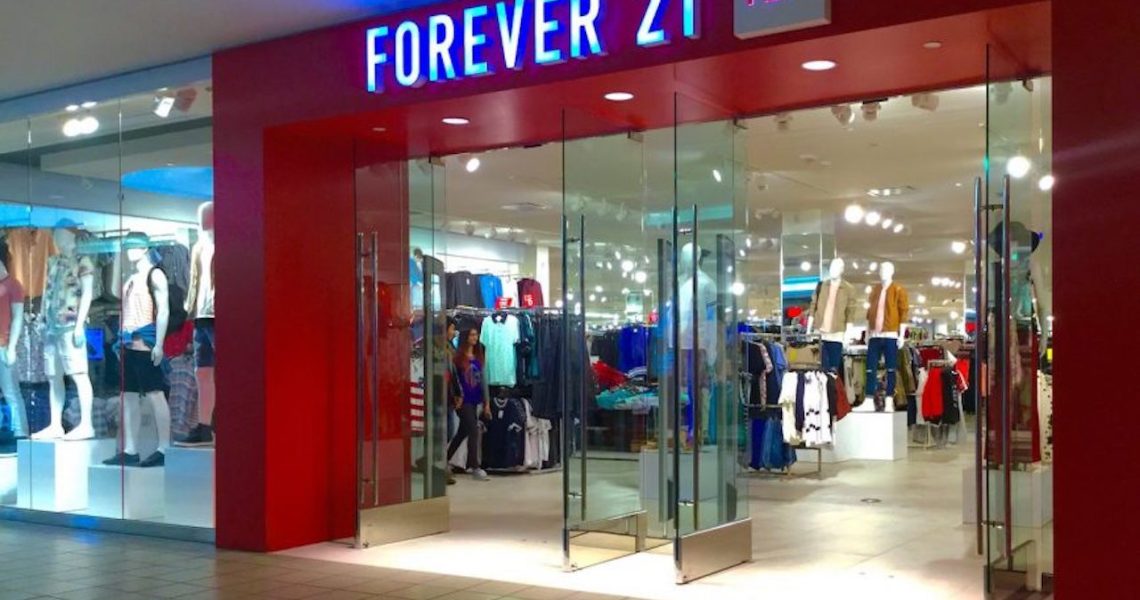Reports emerged on Wednesday that Forever 21 is likely facing a bankruptcy process in the next few days, but there have been rumblings of the company’s struggles for years. In 2016, Forever 21’s exclusive shipping partner, EZ Worldwide Express, went bankrupt, citing the precipitous decline in the retailer’s sales as a major factor in its own shutdown. So what finally led the company to its current breaking point?
In some ways, Forever 21’s struggles are similar to those of department stores like Barneys and Lord & Taylor. According to Scott Stuart, CEO of Turnaround Management Association, high rent prices and an overextended brick-and-mortar footprint are to blame for the ruin of many retailers today.
“It’s a little different, since this is a mainstream, non-luxury retailer with 800 stores around the world,” Stuart said. “But Forever 21 suffers from the same thing that other retailers have, including aggressive leases from its landlord Simon Property Group — they are one of Simon’s biggest clients. If the landlords won’t cut tenants slack or offer concessions, then the obvious decision will be store closures, which will leave a lot of empty retail space. With online market, brands are far more expanded [offline] than they need to be .”
Forever 21 is not alone among its fast-fashion peers. In May, Topshop was forced to close all of its U.S. stores, citing the highly competitive market for affordable fast fashion in the U.S. Stuart said that observing how Forever 21 handles this bankruptcy process will be a good indicator of what the future might have in store for other large fast-fashion companies, like H&M or Zara.
However H&M and Zara are in a different position than Forever 21: Those two are in relatively strong places financially, with H&M valued at close to $16 billion and Zara at $19 billion. Forever 21, valued at only $4 billion, had to close locations in the U.K. after posting a $40 million loss in that market last year.
“I think fast fashion in general is suffering a bit from having both their niche taken out from under them [by faster competitors like Fashion Nova], while also being under the microscope from consumers from a sustainability and quality standpoint,” said Brian Lee, associate director at Gartner L2.
One area where Forever 21 failed to distinguish itself in the fast-fashion world is sustainability. The full extent to which customers truly care about whether brands are sustainable is arguable, but it contributes to brand perception to at least some degree, especially for fast-fashion brands which are routinely pointed out to be a major part of fashion’s impact on the environment. While H&M and Zara began pivoting toward more sustainable messaging in the past three years, Forever 21 has done comparatively little in the area to date. H&M, for example, has set some ambitious sustainability goals and has recently made sustainability a bigger part of its marketing.
Ad position: web_incontent_pos1
“At H&M, sustainability is the biggest thing we are trying to change,” said Emily Scarlett, H&M’s head of communications. “Our ultimate vision is to become 100% circular. We have three quite large goals in that area: By 2020, all of our cotton will be sustainably sourced or recycled. By 2030, everything we sell will be made by recycling material. By 2040, we will be climate positive.”
Despite having 16 million followers on Instagram, Forever 21 hasn’t done much by way of influencer marketing or social media promotion. On the collaborations front, while competitors like H&M were partnering with big name designers like Moschino, Forever 21 became known for more gimmicky collaborations. It teamed wih Cheeto’s, Honda and the United States Postal Service in the past year.
But for Forever 21, it may be too late. The increased pressure on companies that go bankrupt under new bankruptcy laws means that, without a clear plan and a lot of luck, it will be very difficult for Forever 21 to come out on the other side in a recognizable state.
“That’s the big question, whether they can survive,” Stuart said. “Even if they do, they’ll have to be a much slimmer entity, for sure. I’m sure they have some sort of plan, but the odds are not in their favor. They don’t have the time to figure out a new model. Whether they can raise enough capital to emerge, even in a reduced state, is an open question.”




